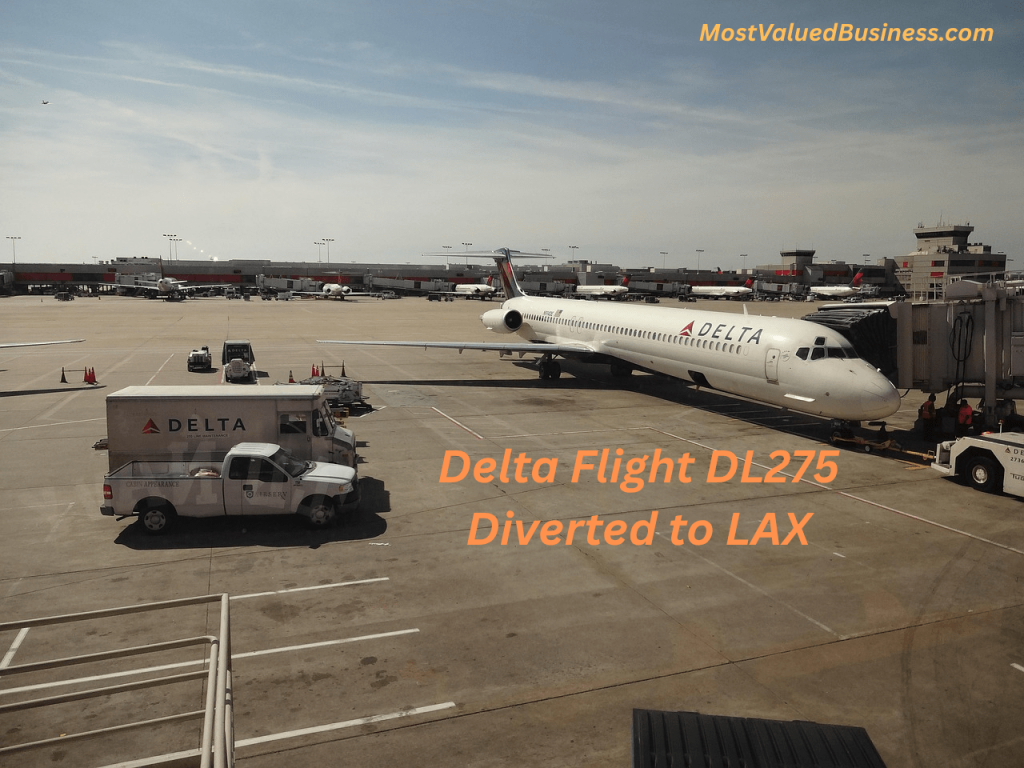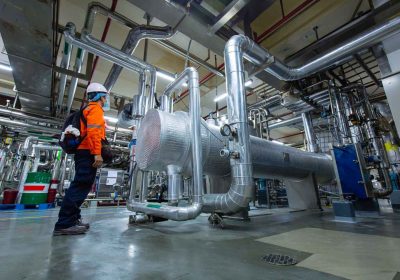Delta Flight DL275 Diverted to LAX: How Predictive AI is Shaping the Future of Aviation Safety?
When a Routine Flight Becomes a Wake-Up Call
On a routine trans-Pacific journey from Detroit to Tokyo, Delta Air Lines Flight DL275, operated by an Airbus A350-900, made headlines after a mid-air diversion to Los Angeles International Airport (LAX).
Diversions are well-known in the aviation industry, but what caught the attention was the prolonged turn, especially after staying nearly five hours over the Pacific Ocean, highlighting the possible malfunction in the aircraft’s anti-ice system.
This incident shifts the focus towards the possible integration of AI in the aviation system to increase the safety and security of the aircraft. The increased usage of AI in every sector of the world raises the possibility of using AI-powered predictive maintenance to enhance aviation safety.
What Happened to DL275?
Flight Details:
- Flight: Delta DL275
- Aircraft: Airbus A350-900 (widebody jet)
- Route: Detroit Metro (DTW) to Tokyo Haneda (HND)
- Diversion: Los Angeles (LAX)
- Cause: Reported anti-ice system failure
Timeline of Events
- Takeoff from DTW: As usual, the flight took off normally, with clear weather and a smooth ascent
- Malfunction Detection: However, midway over the Pacific Ocean, a potential issue with the engine’s anti-icing system was detected. Smooth running of the anti-icing system is crucial to fly at 38,000 feet through cold, moisture-rich air.
- Decision to Divert: Instead of continuing or turning back, the crew diverted to LAX, a hub with advanced technical support and emergency capabilities.
- Safe Landing: The flight landed safely without injuries, and later, the passengers rebooked flights to travel to their destination safely.
Why Was LAX Chosen?
Despite reaching the halfway point to Tokyo, the aircraft turned around due to potential risk. Here is why LAX was chosen –
- Maintenance Infrastructure: LAX is a Delta TechOps partner station, equipped for A350 servicing.
- Emergency Support: LAX has better fire and medical services that are readily available for people.
- Passenger Accommodation: LAX allows easier rebooking, transportation, and housing of diverted passengers.
The Anti-Ice System: Why It Matters at 38,000 Feet
The anti-ice system aims to prevent the accumulation of ice on engine inlets, sensors, and wings. At 38,000 feet, supercooled droplets can freeze quickly, leading to –
- Engine flameout
- Increased drag and reduced fuel efficiency
- Pitot-static system errors (affecting speed and altitude readings)
If unaddressed, it can lead to a failure in the system, leading to serious safety risks, especially during long-haul flights.
Passenger Reactions: What it Feels Like Mid-Air
As reported, passengers didn’t face any injuries, but there was:
- Confusion and uncertainty, as the flight took a reversed course
- Clear communications from flight attendants
- Overnight accommodations and rebooking were taken care of by Delta
- A decent and smooth landing in Los Angeles
The passenger’s response highlighted Delta’s professionalism and strong commitment to the safety culture. However, it brings a point of discussion: Can AI technology prevent such incidents before they occur?
Enter Predictive Maintenance: The Future of Safer Skies
Predictive maintenance, as it stands, uses machine learning, AI, and real-time sensors to detect anomalies before a system fails.
How It Works:
- Data Analytics: AI systems analyze various patterns, highlighting early signs of wear or malfunction.
- Sensor Inputs: Modern aircraft like the A350 have thousands of sensors monitoring engine temperature, vibration, pressure, and flow rates.
- Alert Technicians: AI alerts ground crews to inspect the aircraft or make necessary replacements before departure.
What Could Predictive Tech Have Done for DL275?
Supposedly, if predictive systems like AI had pointed out the anti-ice anomaly before takeoff, Delta could have:
- Prevented a mid-air diversion
- Saved millions in costs and delays
- Inspected or replaced the component in Detroit
Cost of the Diversion: Not Just Fuel and Time
Estimated direct and indirect costs:
| Factor | Cost Estimate |
| Extra fuel burn | $30,000-$50,000 |
| Emergency landing fees | $20,000 |
| Crew and hotel accommodations | $100,000+ |
| Passenger rebooking | $200,000+ |
| Operational ripple effect | $1.5 million |
| Total | $2 million + |

Aviation Industry Shift: Embracing Smart Maintenance
Airlines Already Using It:
- United Airlines: After the installation of AI analytics, unscheduled maintenance events reduced by 35%.
- Emirates: Implementation of predictive models improved the life-cycle management of the engine.
- Lufthansa: AVIATAR platform monitors aircraft health in real time.
Tech Players Involved:
- Honeywell Forge: Provides a dashboard for predictive alerts
- GE Aviation: Taps into real-time engine data
- Rolls-Royce: Provides TotalCare AI-enabled engine health monitoring
Limitations of Predictive Maintenance
Despite the promise AI and machine learning offer, it has some limitations –
1. Regulatory Approvals
The FAA and other aviation authorities need stringent certification to implement AI systems in safety-critical decisions.
2. Data Privacy and Integration
Aircraft data is often proprietary and fragmented between operators, manufacturers, and software vendors. Thus, making it difficult to monitor AI performance across multiple platforms.
3. Hardware Compatibility
Older aircraft models lack the sensor arrays required to teach AI algorithms. Retrofitting legacy fleets is both costly and logistically challenging.
What the DL275 Incident Teaches Us About Aviation’s Future
The event has become a perfect case study to study the gap between reactive and proactive safety protocols.
Delta’s flight crew’s decision to reverse turn highlights the perfect following of textbook safety protocol. However, the goal of modern aviation is to prevent, and not just react.
Future of Aviation Safety Will Include:
- Unified fleet health dashboards
- AI-based real-time diagnostics
- Predictive repair scheduling based on usage patterns, and not on fixed intervals
- Automated and real-time pre-flight inspection reports.
Thus, we can say that AI will assist airlines in moving from “if it breaks, fix it” to “before it breaks, check it.”
FAQs: Delta DL275 and Predictive Maintenance in Aviation
A suspected malfunction in the anti-ice system prompted the crew to land at the nearest suitable airport, LAX. It is well-equipped to repair A350 and offer premium class passenger services.
The diversion was precautionary. So, no passenger was injured, and they landed safely at the airport.
The usage of AI, machine learning, and sensor data to predict possible failures before they occur enables preemptive repairs.
The A350 is among the most advanced and safest widebody jets. They are safe to travel in, as they come with cutting-edge avionics and redundant safety systems.
Predictive maintenance has certain limitations. They cannot prevent all diversions, but they can prevent many. Equipment-related diversions could be reduced greatly through AI diagnostics.
Final Thoughts: DL275 as a Lesson for the Aviation Industry
Delta Flight DL275 is a strong and powerful reminder of both the resilience of aviation protocols and how AI can help to prevent such diversions. Even though the flight landed safely, there were no injuries due to the presence of a highly skilled crew and operational procedures.
Yet, it reveals one glaring issue that reactive safety still dominates the aviation industry, and it requires a massive change in its operational behavior.
Now, as the aviation industry modernizes, the usage of AI and machine learning in predictive maintenance will become standard practice, and they will help prevent diversions before they occur. That way, aviation companies can reduce the cost, both human and financial, which makes it too good to be ignored.
Read Also:
- Boeing’s First Dreamliner Delivery To China Since 2019 To Land Friday
- 7 Reasons to Use a Corporate Booking Tool for Business Travel
- The Role And Responsibilities Of A Corporate Travel Consultant
- “I Want to Start a Business but Have No Ideas!” : 102 Business Ideas to Thrive in the Future
- Business Trip Planning: Ensuring Maximum Comfort For Your Corporate Journey
- Everything You Need To Know About DJI



